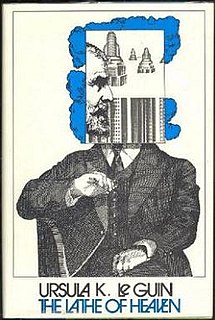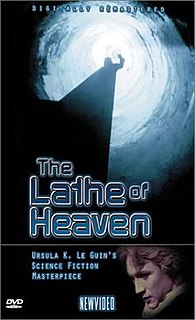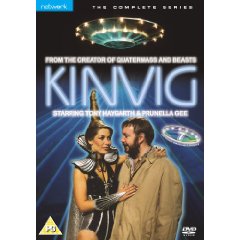
Alfred Elton van Vogt was a Canadian-born science fiction author. His fragmented, bizarre narrative style influenced later science fiction writers, notably Philip K. Dick. He was one of the most popular and influential practitioners of science fiction in the mid-twentieth century, the genre's so-called Golden Age, and one of the most complex. The Science Fiction Writers of America named him their 14th Grand Master in 1995.

Star Maker is a science fiction novel by British writer Olaf Stapledon, published in 1937. The book describes a history of life in the universe, dwarfing in scale Stapledon's previous book, Last and First Men (1930), a history of the human species over two billion years. Star Maker tackles philosophical themes such as the essence of life, of birth, decay and death, and the relationship between creation and creator. A pervading theme is that of progressive unity within and between different civilizations.

Joan D. Vinge is an American science fiction author. She is known for such works as her Hugo Award–winning novel The Snow Queen and its sequels, her series about the telepath named Cat, and her Heaven's Chronicles books. She also is the author of The Random House Book of Greek Myths (1999).

Interzone is a British fantasy and science fiction magazine. Published since 1982, Interzone is the eighth-longest-running English language science fiction magazine in history, and the longest-running British science fiction (SF) magazine. Stories published in Interzone have been finalists for the Hugo Awards and have won a Nebula Award and numerous British Science Fiction Awards.

The Lathe of Heaven is a 1971 science fiction novel by American writer Ursula K. Le Guin. The plot concerns a character whose dreams alter past and present reality. The story was serialized in the American science fiction magazine Amazing Stories. The novel received nominations for the 1972 Hugo and the 1971 Nebula Award, and won the Locus Award for Best Novel in 1972. Two television film adaptations were released: the PBS production, The Lathe of Heaven (1980), and Lathe of Heaven (2002), a remake produced by the A&E Network.

Hellstrom's Hive is a 1973 science fiction novel by Frank Herbert. It is about a secret group of humans who model their lives upon social insects and the unsettling events that unfold after they are discovered by a deep undercover agency of the U.S. government.
David Pringle is a Scottish science fiction editor.

Planetary romance is a subgenre of science fiction in which the bulk of the action consists of adventures on one or more exotic alien planets, characterized by distinctive physical and cultural backgrounds. Some planetary romances take place against the background of a future culture where travel between worlds by spaceship is commonplace; others, particularly the earliest examples of the genre, do not, and invoke flying carpets, astral projection, or other methods of getting between planets. In either case, it is the planetside adventures which are the focus of the story, not the mode of travel.

An extraterrestrial or alien is any extraterrestrial lifeform; a lifeform that did not originate on Earth. The word extraterrestrial means "outside Earth". The first published use of extraterrestrial as a noun occurred in 1956, during the Golden Age of Science Fiction.
Dyson spheres are theoretical constructs that harvest the entire energy output of a given star by completely enclosing it. They are named after physicist Freeman Dyson, who proposed the concept in 1960. A precursor to the concept of Dyson spheres was featured in the 1937 novel Star Maker by Olaf Stapledon. Fictional Dyson spheres are typically solid structures forming a continuous shell around the star in question, although Dyson himself considered that prospect mechanically implausible and instead proposed multiple separate objects independently orbiting the star. It is a type of Big Dumb Object.

Robert Paul Holdstock was an English novelist and author best known for his works of Celtic, Nordic, Gothic and Pictish fantasy literature, predominantly in the fantasy subgenre of mythic fiction.

Hammerfall is a science fiction novel by American science fiction and fantasy author C. J. Cherryh. It was first published in June 2001 in the United States by HarperCollins under its Eos Books imprint. It was also serialized in two parts as Ribelle Genetico and Il Pianeta del Deserto in the Italian science fiction magazine, Urania, published in issue 1425 in October 2001, and issue 1430 in January 2002, respectively.

The term insectoid denotes any creature or object that shares a similar body or traits with common earth insects and arachnids. It has use in technology, ufology, and other media.

The Lathe of Heaven is a 1980 film adaptation of the 1971 science fiction novel The Lathe of Heaven by Ursula K. Le Guin. It was produced in 1979 as part of New York City public television station WNET's Experimental TV Lab project, and directed by David Loxton and Fred Barzyk. Le Guin, by her own account, was involved in the casting, script planning, re-writing, and filming of the production.

Kinvig is a 1981 sci-fi comedy television series made by London Weekend Television which ran for one series of seven episodes. It was the only sit-com written by Nigel Kneale who was more famous for creating serious science fiction dramas such as Quatermass and its sequels, and it was directed and produced by Les Chatfield, with original music by Nigel Hess.

"Mars Is Heaven!" is a science fiction short story by American writer Ray Bradbury, originally published in 1948 in Planet Stories. "Mars Is Heaven!" was among the stories selected in 1970 by the Science Fiction Writers of America as one of the best science fiction short stories published before the creation of the Nebula Awards. As such, it was published in The Science Fiction Hall of Fame Volume One, 1929–1964. It also appears as the sixth chapter of The Martian Chronicles, revised as "The Third Expedition."

The Year's Best Science Fiction: Twenty-Fifth Annual Collection is a science fiction anthology edited by Gardner Dozois that was published on July 8, 2008. It is the 25th in The Year's Best Science Fiction series and won the Locus Award for best anthology. The UK edition is titled The Mammoth Book Of Best New SF 21, the "21st Annual Collection" (ISBN 978-1845298289) and contains the same stories listed.

Science Fiction: The 100 Best Novels, An English-Language Selection, 1949–1984 is a nonfiction book by David Pringle, published by Xanadu in 1985 with a foreword by Michael Moorcock. Primarily, the book comprises 100 short essays on the selected works, covered in order of publication, without any ranking. It is considered an important critical summary of the science fiction field.

"Divide and Rule" is a science fiction novella by American writer L. Sprague de Camp. It was first published as a serial in the magazine Unknown from April to May, 1939 and first appeared in book form in de Camp's collection Divide and Rule. The story was revised for book publication. The first stand-alone book edition of the story was published as a large-print hardcover by Thorndike Press in September 2003. An E-book edition of the story was issued by Gollancz's SF Gateway imprint on September 29, 2011 as part of a general release of de Camp's works in electronic form.
The Science in Science Fiction is a book by David Langford, Peter Nicholls and Brian Stableford published in 1982.

















